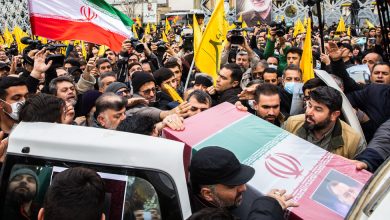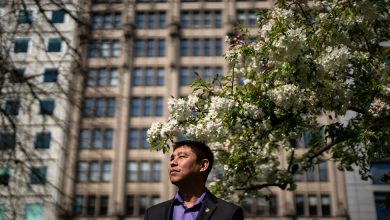Peter Tarnoff, Diplomat Who Helped Plot the ‘Argo’ Escape from Iran, Dies at 86

Peter Tarnoff, a seasoned diplomat whose work behind the scenes for presidents Jimmy Carter and Bill Clinton included establishing a secret channel to Fidel Castro and helping arrange the escape of six U.S. Embassy officials from Iran, an escapade later depicted in the 2012 movie “Argo,” died on Nov. 1 at his home in San Francisco. He was 86.
His wife, Mathea Falco, said the cause of death was complications of Parkinson’s disease.
Mr. Tarnoff was part of a cohort of Foreign Service officers who, inspired by the words of President John F. Kennedy, joined the American diplomatic corps in the early 1960s.
Many of them cut their teeth on assignment in South Vietnam, and several — among them Mr. Tarnoff, Anthony Lake, Frank Wisner II and Richard Holbrooke — went on to play leading roles in the U.S. foreign policy establishment.
But while outsize personalities like Mr. Holbrooke, a frequent contender for secretary of state, and Mr. Lake, a national security adviser under Bill Clinton, became famous, Mr. Tarnoff preferred to wield his influence out of the public eye.
“Peter was really the quintessential diplomat in the sense that he never asked for the spotlight,” Wendy Sherman, who served alongside him in the Clinton administration, said in a phone interview. “He never needed to be the named person. He just got the job done.”
From early on in his career he developed a reputation as the consummate confidential assistant, guiding high-profile diplomats through high-profile negotiations.
In South Vietnam he became a close adviser to Henry Cabot Lodge Jr., the U.S. ambassador in Saigon, a job he continued in 1969 when Mr. Lodge led the U.S. delegation to the Paris peace talks to end the Vietnam War.
Mr. Tarnoff performed a similar service nearly a decade later as the special assistant to Cyrus Vance, the secretary of state under Jimmy Carter, and Edmund Muskie, Mr. Vance’s successor.
In that role he both protected his principals from bureaucratic infighting — Mr. Vance and Zbigniew Brzezinski, the national security adviser, were locked in open warfare for much of the Carter administration — and carried out assignments too sensitive to run through conventional channels.
He established a secret relationship with Ricardo Alarcón, a top Cuban diplomat based in New York. Over cigars at the Plaza Hotel, and later in a secret meeting in Havana with Fidel Castro, they hashed out a deal to end the exodus of thousands of asylum seekers to Florida, known as the Mariel boatlift.
He played an even more confidential part during the 1979 Iran hostage crisis, when revolutionaries detained most of the personnel at the U.S. Embassy in Tehran. Six had escaped to the Canadian Embassy, and Mr. Tarnoff served as the liaison between the Canadian government and the Central Intelligence Agency, which had a plan to extract them.
Posing as a Canadian film crew scouting locations for a science fiction film called “Argo,” the six staff members, joined by two C.I.A. operatives, managed to get through Iranian passport control and onto a flight to Zurich.
Mr. Tarnoff never confirmed his role in what came to be known as the Canadian Caper, nor did he see the Oscar-winning film made about it. But State Department documents show that he played an integral part.
He spent much of the 1980s in the private sector, including a stint as president of the Council on Foreign Relations, the American think tank specializing in U.S. foreign policy and international relations founded in 1921. But he returned to the State Department in 1993 as the deputy secretary for political affairs, essentially the No. 3 spot.
A few months into the job, he set off a minor scandal when, speaking anonymously to a group of journalists, he said that the United States might need to pull back its commitments overseas in the face of budget deficits and the end of the Cold War.
The New York Times, which did not have a reporter in the room, soon unmasked Mr. Tarnoff, and for a moment it looked as though he might lose his job.
But Mr. Tarnoff was too valuable to lose. He reprised his role as secret go-between to the Cuban government, and again worked with Mr. Alarcón, this time on a deal to end the United States’s open door policy to Cuban asylum seekers.
“Peter always had this fabulous knack of understanding what a principal needed, and how to manage and put together ideas for solutions to problems and run interference, and to do so with incomplete discretion,” Mr. Wisner, who served as under secretary of defense for policy under President Clinton, said in a phone interview.
Peter Tarnoff was born on April 19, 1937, in Manhattan and raised in Brooklyn until he was 12, when his family moved to Montreal. His father, Norman, was an executive at Macy’s, and his mother, Henrietta (Goldfarb) Tarnoff, was a homemaker.
He graduated from Colgate in 1958 with a degree in philosophy, a subject he continued to pursue at the Committee on Social Thought, a doctoral program at the University of Chicago. But his interest in global affairs pulled him away from academia, and he joined the Foreign Service in 1962.
Mr. Tarnoff’s first marriage, to Danielle Oudinot, ended in divorce. He married Ms. Falco in 1982. Along with her, he is survived by a son from his first marriage, Alexander Tarnoff; a son from his second, Benjamin Tarnoff; his half brother, John Tarnoff; and three grandchildren. Another son with Ms. Oudinot, Nicholas Tarnoff, died in 1991.
After an initial posting to Lagos, Nigeria, he moved to Saigon (now Ho Chi Minh City), the capital of South Vietnam. In 1965 he was seriously wounded by flying glass when a car bomb detonated beside the U.S. Embassy, killing two inside and 20 on the street.
During the 1970s he held a variety of posts around Europe before moving to Washington in 1975.
After Ronald Reagan defeated Mr. Carter in the 1980 presidential election, tradition dictated that the incoming administration would take care of Mr. Tarnoff, who was both a nonpolitical Foreign Service officer and a confidante of one of the previous administration’s leading Cabinet members.
But in a shocking breach, Alexander Haig, the new secretary of state, pushed Mr. Tarnoff aside, ostensibly because his work in Cuba had left him politically tainted. He took a yearlong fellowship at the Hoover Institution at Stanford, then resigned from the Foreign Service in 1982.
He served as president of the World Affairs Council of Northern California, based in San Francisco, for three years, then assumed the leadership of the Council on Foreign Affairs from 1985 to 1993, when he joined the State Department at the behest of his fellow Californian, Warren Christopher, who had just been named secretary of state.
Mr. Tarnoff left the State Department in 1997 and returned to San Francisco. Not long before leaving, he received the Distinguished Service Award, the department’s highest honor.




